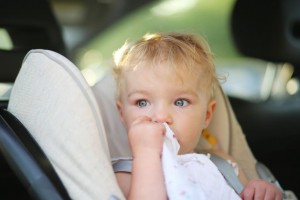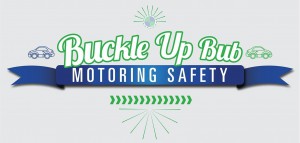Is Your Baby Buckled Up Safely?
13 Aug 2015
I was alarmed to read recently that only 50% of baby/child car restraints are being used correctly. That means around 50% of our babies and children are at risk every day. To ensure that you have the best and latest information to safely buckle up baby, I’m pleased to share this brief overview – “Buckle Up Bub – A Guide to Car Safety and Children”.

When taking your baby for a ride in the car, nothing is more important than their safety, as studies have found that being a passenger in a car poses the highest statistical risk compared to any other form of transportation. Between 2004 and 2013, 604 children lost their lives in car accidents in Australia, which is a figure far higher than deaths caused by other means. This highlights the importance of making sure your baby is securely fastened in a seat suited for their size.
The good news is that professional fitters are there to help, and when a child is fitted properly into a car seat, they are seven times less likely to be injured in a crash. Incorrectly seated children and babies can cause harm to other people in a collision, so it is always vital to follow the manufacturers’ instructions when fitting your baby. In a recent study conducted by Neuroscience Research Australia, 51% of parents surveyed were not using the appropriate sized restraints, and 51.4% of parents were using the restraints incorrectly.
If you’re not sure if you are fitting your bub properly, there are numerous fitting stations located around urban centers in Australia, where you can get some assistance from a professional and learn how to correctly fit the seat yourself.
Getting your head around government legislations surrounding car seats can also be daunting, as sometimes it isn’t clear what the laws or recommendations for best practice are. Australian law states that all children must be safely fastened in a child seat that is correct for their age, and that children under 7 cannot travel without an approved restraint. Different guidelines and legal requirements also exist surrounding rear and forward facing seats, with laws changing as your baby gets older. For example, babies from 0-6 months must be placed in rear-facing back seats, as their head is approximately half the size of their body weight and must be protected.
As your child gets older you can swap the rear facing seat for a forward facing seat, and once their shoulders no longer fit the forward facing seat, it’s onto the booster. Similarly, once your child’s shoulders no longer fit the booster, and their eye level is higher than the back of the seat, they can progress onto a lap belt.
Still not sure if you are using the correct seat for your baby? This great infographic aims to explain the various laws and requirements surrounding baby seats, by making clear what exact requirements you must adhere to when travelling with your precious cargo.
* NOTE: These laws are relevant to Australia … please check relevant laws pertinent to your Country of Residence.
